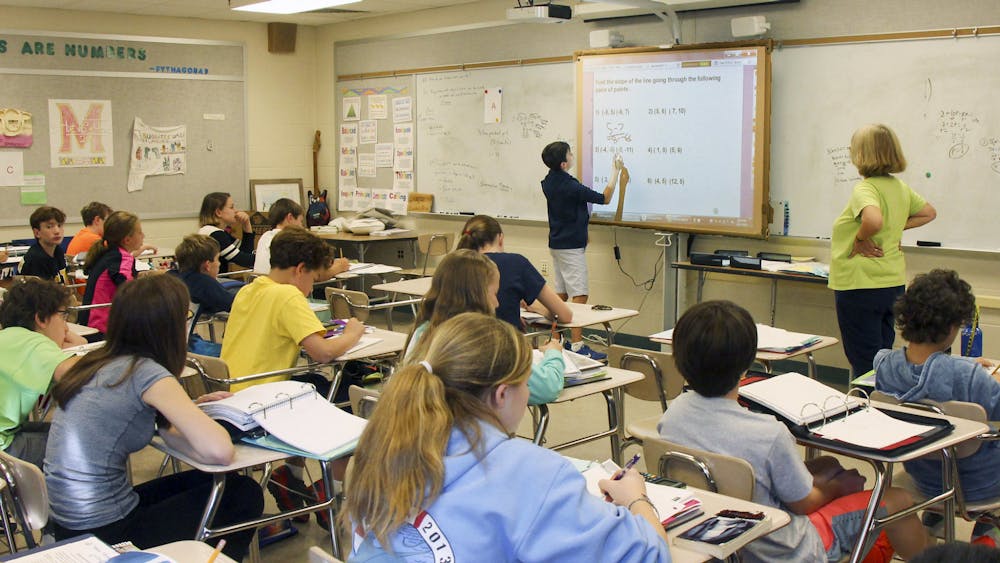A group of researchers at the Bloomberg School of Public Health (BSPH) conducted a randomized control trial on a perpetration-focused Child Sexual Abuse (CSA) prevention program among adolescents in Maryland. The new pilot curriculum — Responsible Behavior with Younger Children (RBYC) — was found to be associated with increased knowledge of CSA laws and awareness of avoiding and preventing CSA acts. The study is documented and published in Child Maltreatment.
According to the Maryland Coalition Against Sexual Assault, in 2020, 28.4% of child abuse consisted of CSA, which is 9% higher than the 2020 national average. Furthermore, this marks a 3.4% increase from 2019.
Interim Chair and Professor in the Department of Mental Health at the BSPH Elizabeth Letourneau talked about the motivation behind this pilot study in an interview with The News-Letter. Letourneau is also the director of the Moore Center for the Prevention of Child Sexual Abuse, which strives to achieve CSA prevention through research, education, communication and advocacy.
“We came in with a strong understanding that kids are at risk of engaging in child sexual abuse behaviors, and schools also have identified that as a key area of concern,” she said.
Existing CSA programs, such as Second Step: Student Success Through Prevention (SS-SSTP) Middle School Program, primarily involve teaching adolescents to recognize and report CSA that has already occurred. However, a study has shown that the association between SS-SSTP and reduced sexual violence behaviors was insignificant.
RBYC is focused on preventing students from committing CSA against their peers and equipping them with the knowledge and skills to avoid CSA behaviors.
Deputy Director of the Moore Center for the Prevention of Child Sexual Abuse and Clinical Psychologist Amanda Ruzicka evaluated the development and implementation of interventions targeting CSA.
In an interview with The News-Letter, she explained that current research shows that adolescents engaging in CSA have knowledge gaps in sexual consent and appropriate sexual behaviors. The pilot RBYC program addressed CSA with a different approach than existing programs.
“We found that about 70 percent of cases of child sexual abuse are perpetrated by another youth, who are usually a few years older. So we took the approach of starting before the harm even occurs,” Ruzicka said.
The researchers tested the feasibility and efficiency of the RBYC program in three phases. The first phase involved three stakeholder groups who provided feedback on the initial plan of RBYC. The stakeholders included sixth to seventh-grade youths, their parents and their educators. The team made changes to RBYC, such as modifying the language used in the curriculum to improve efficiency.
In the second phase, the researchers visited public schools and presented discrete portions of the curriculum. They collected feedback from the students on their learnings. The team then went to four partner public schools in Baltimore in the third phase to implement the curriculum and perform the randomized control trial. Half of the schools were in the intervention group, and the other half were in the control group.
Students in the intervention group demonstrated increased knowledge about CSA laws and the meaning of sexual consent. Furthermore, the students also showed increased self-efficacy in preventing peer sexual harassment and CSA.
The program contained eight sections, four of which involved family activities. The students wrote one-page summaries highlighting what they learned, which were sent back to their respective families. The parents also received additional resources that aimed to reinforce the lessons from RBYC.
Ruzicka acknowledged the value of family engagement throughout the intervention program.
“Different families, cultures and religions have different values in what is appropriate to include in a sexual-behavior-related program. We wanted to provide the basic knowledge but also allow the communities to work with the teams themselves to figure out how they can incorporate their own beliefs into the program,” Ruzicka said.
Looking ahead, the researchers are seeking funding for a larger and more rigorous curriculum. They want to expand their sample size to rural schools and more schools in general. Additionally, in collaboration with the World Childhood Foundation, they are also adapting the current program for adolescents with mild to moderate intellectual and developmental disabilities. The team adopted a similar approach by directly engaging the stakeholders to evaluate the adapted program as well.
“Child sexual abuse is preventable not inevitable. That really motivates all our work,” Letourneau said.
Editor’s note: The original article was edited to clarify the results of the SS-SSTP study.
The News-Letter regrets this error.





